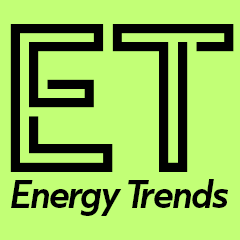
The European LNG Market Monitoring Report (MMR) published by the European Union Agency for the Cooperation of Energy Regulators (ACER) says EU LNG demand is likely to reach its peak in 2024, due to structural gas demand reductions driven by the EU’s ambitious decarbonisation goals.
The report analyses global and EU market developments and recommends further actions to improve transparency, competition and flexibility in European LNG terminals.
“During the energy crisis, the EU successfully secured gas supply and diversified gas imports away from Russia, with LNG playing a key role in this shift,” reminds the report noting that since 2022, over 50 billion cubic metres (bcm) of new LNG regasification infrastructure in the EU has eased supply congestion and helped narrow the price gap between European gas hubs and LNG spot prices.
The EU is the biggest LNG import market (with 134 bcm of LNG imports in 2023), and the US is the largest exporter (119 bcm in 2023). In 2023, Europe imported 18 bcm of Russian LNG, mostly from long-term contracts signed before 2022. At least 1 bcm, but possibly more, was re-exported to Asian markets through LNG reloads.
The report underlines that EU LNG demand is likely to reach its peak this year. This is due to reductions in structural gas demand driven by the EU’s ambitious decarbonisation goals.
The 19 global liquefaction projects under construction are set to boost LNG production by circa 200 million tonnes by 2030, equivalent to half of the current yearly trade. Around 75 per cent of the LNG import capacity added in the EU since 2022 are Floating Storage and Regasification Units (FSRUs), which allows for the potential repurposing or relocation of these floating infrastructure should their utilisation significantly decline, notes ACER.
The report underlines that the targeted gas demand cut scenario of the REPowerEU (if it materialises by 2030) could shift the EU’s reliance on the spot LNG market, turning a 49 bcm ‘under-contracted’ status in 2023 to an ‘over-contracted’ position of 30 to 40 bcm between 2027-2030. Under-contracted means insufficient long-term contractual commitments increasing buyers’ reliance on the more volatile spot market. Over-contracted means the long-term contracts exceed the demand. Nonetheless, the surplus in long-term commitments should not pose a burden thanks to the flexibility of free-on-board (FOB) contracts, which enable surplus LNG to be sold on the spot market or redirected elsewhere.
ACER highlights that contrary to the general belief, the EU remains more dependent on long-term than on spot LNG contracts. TTF serves as the predominant indexation term for EU spot contracts (64 per cent), but not for long-term ones (where Henry-hub and Brent indexations are dominant).


